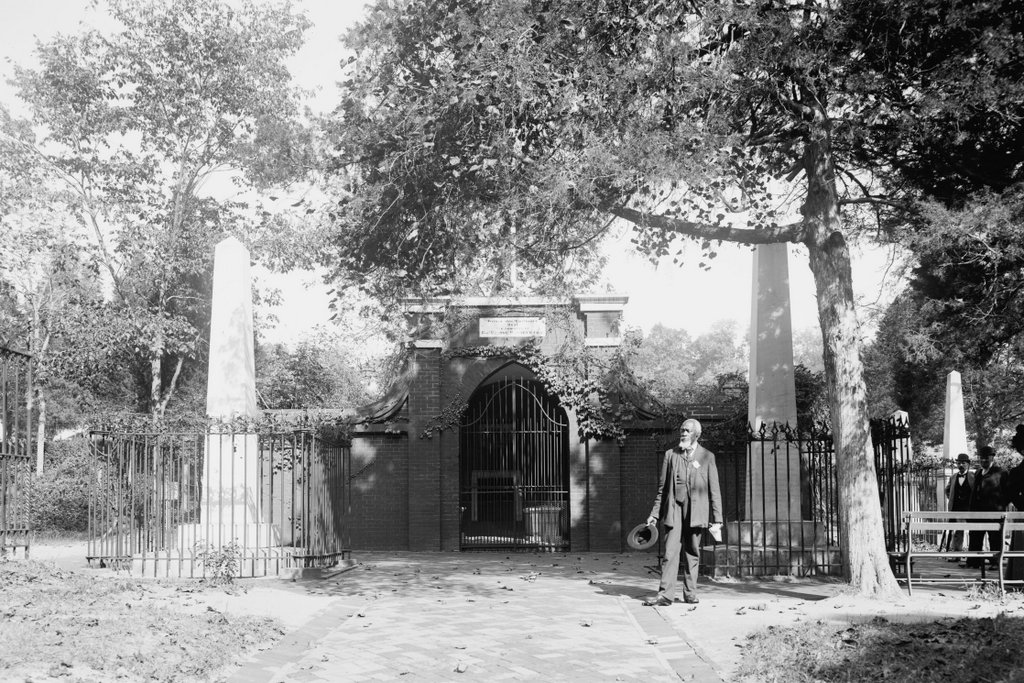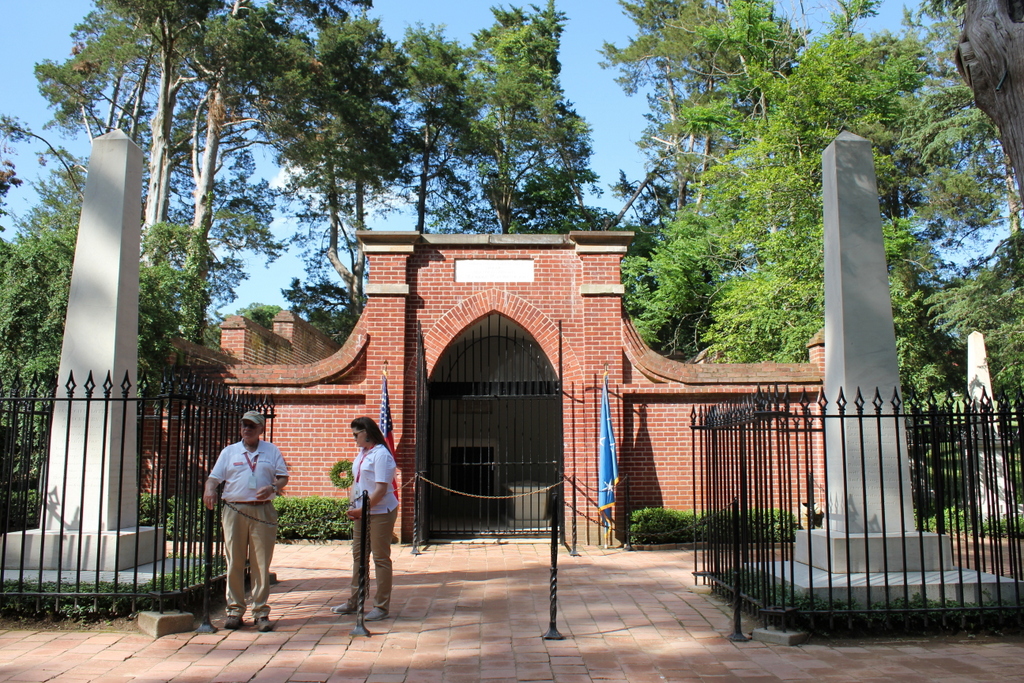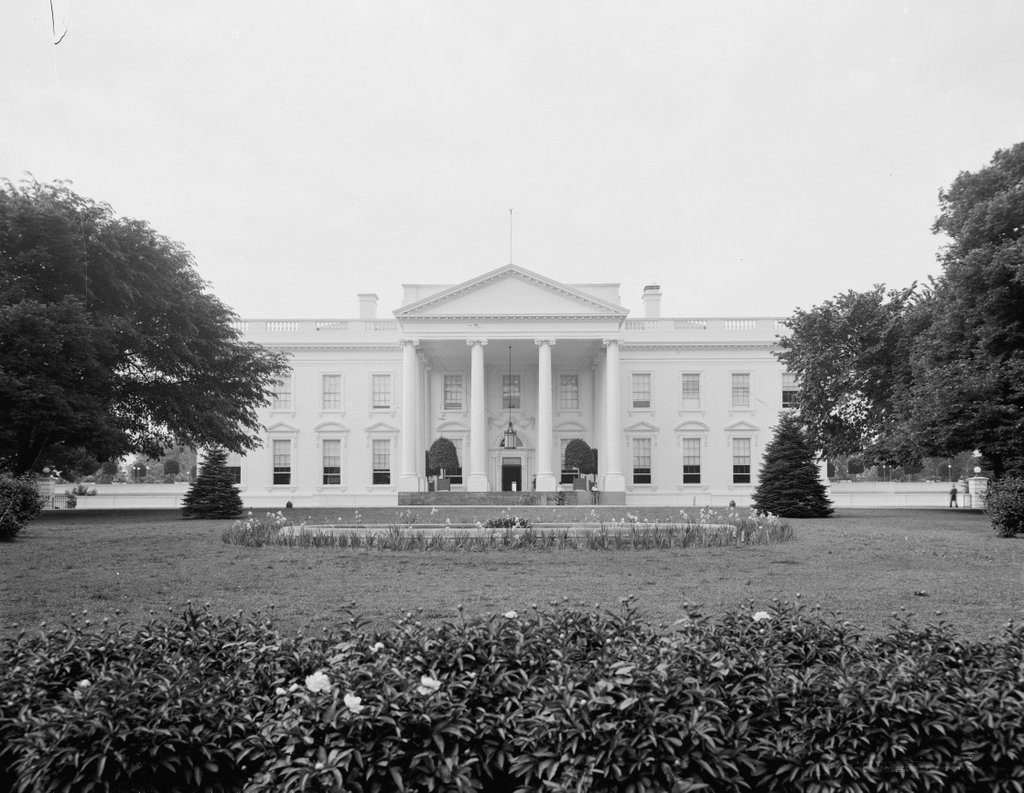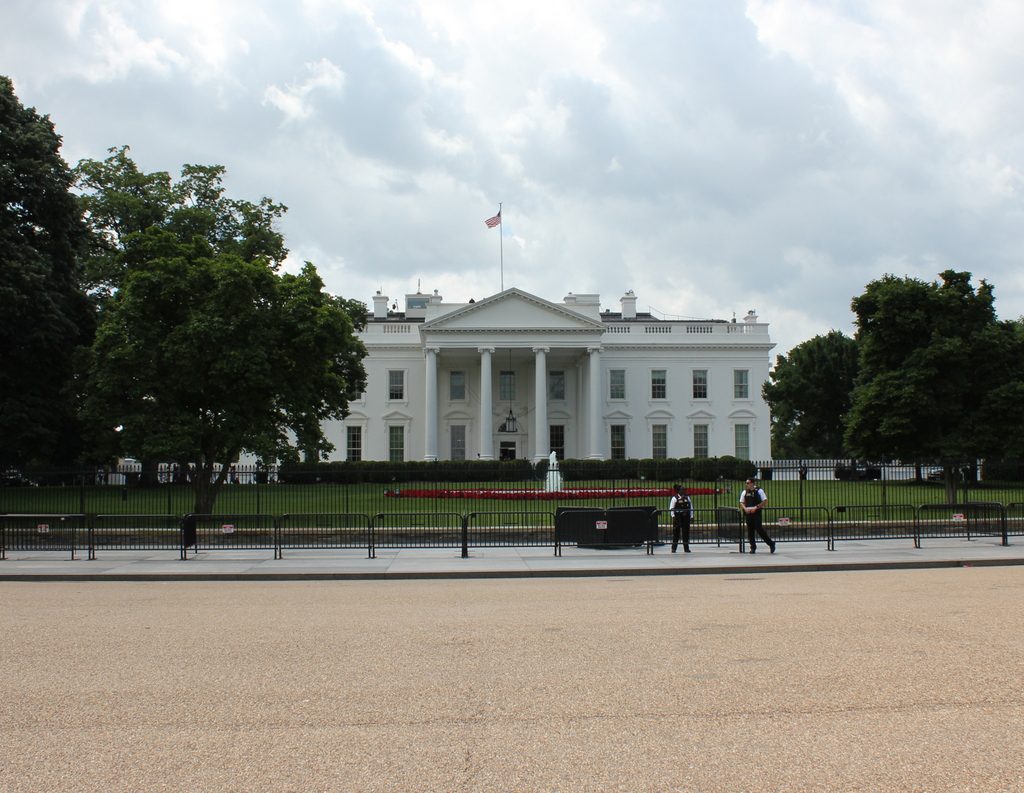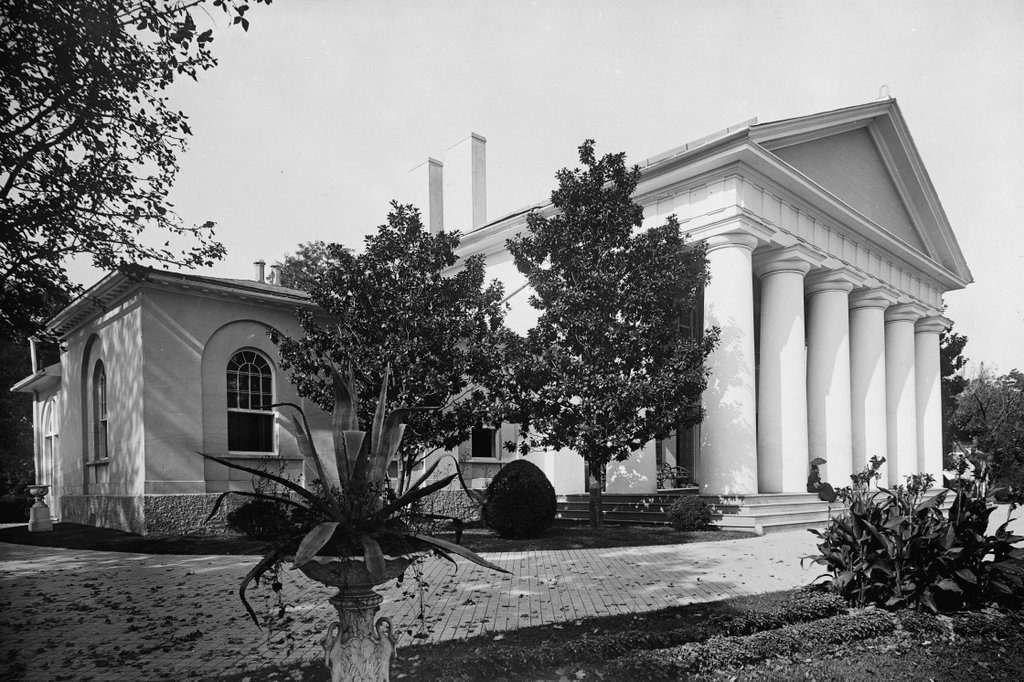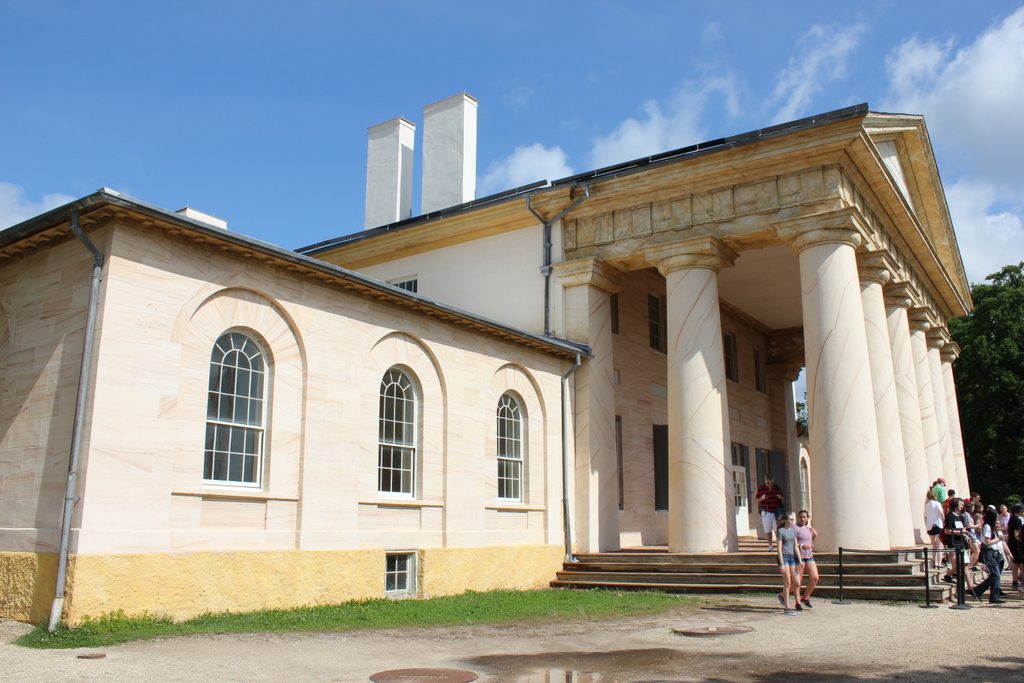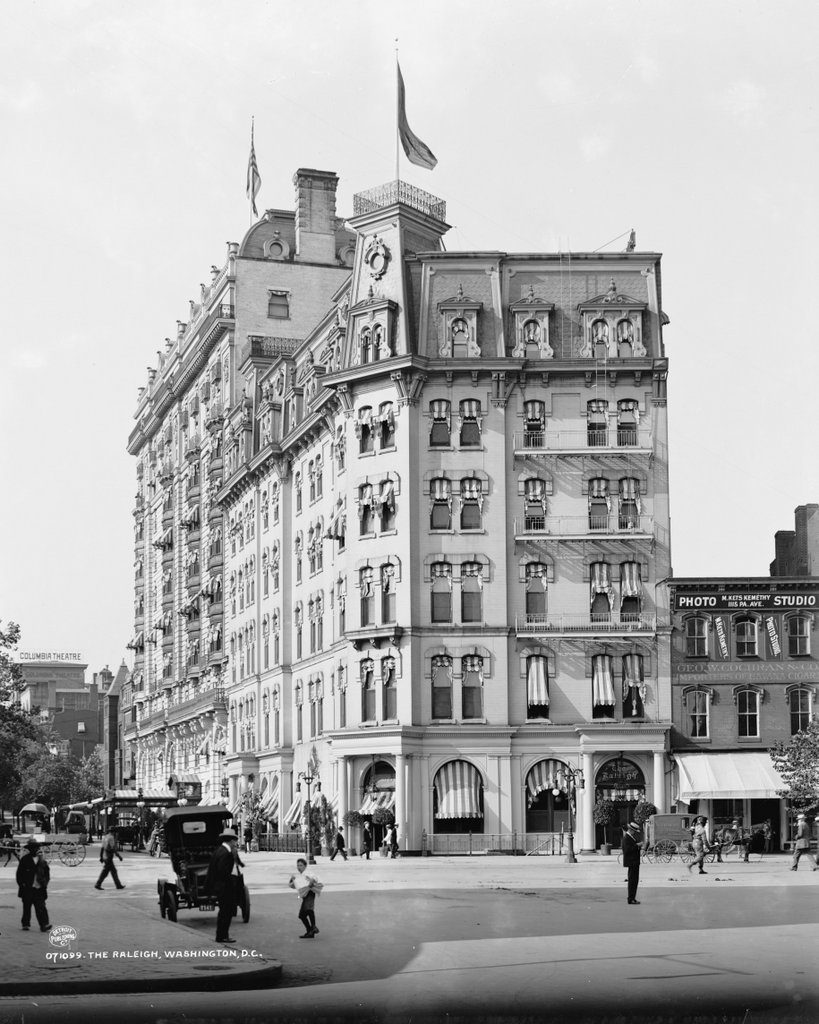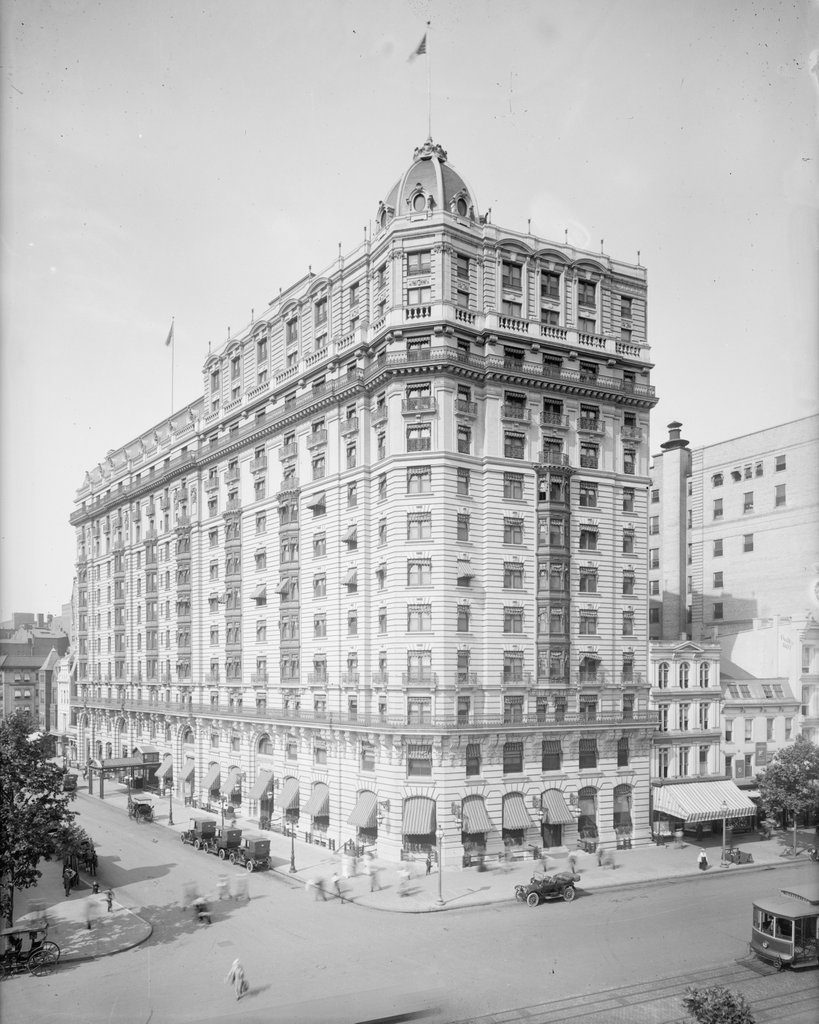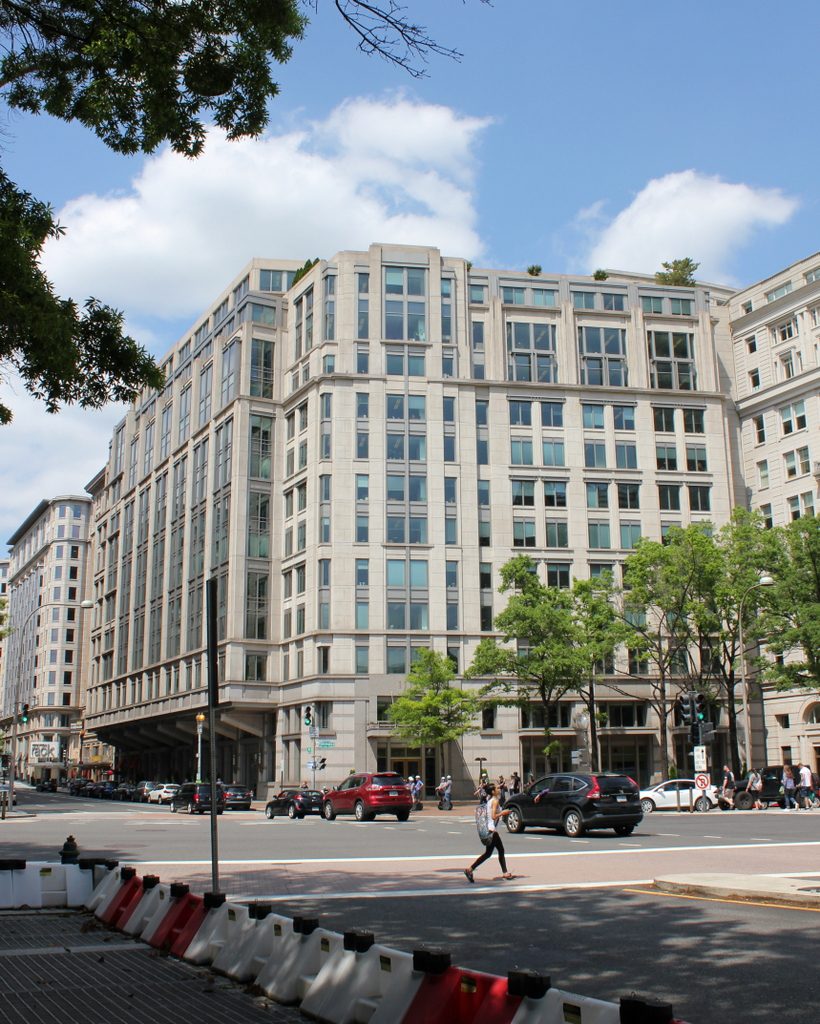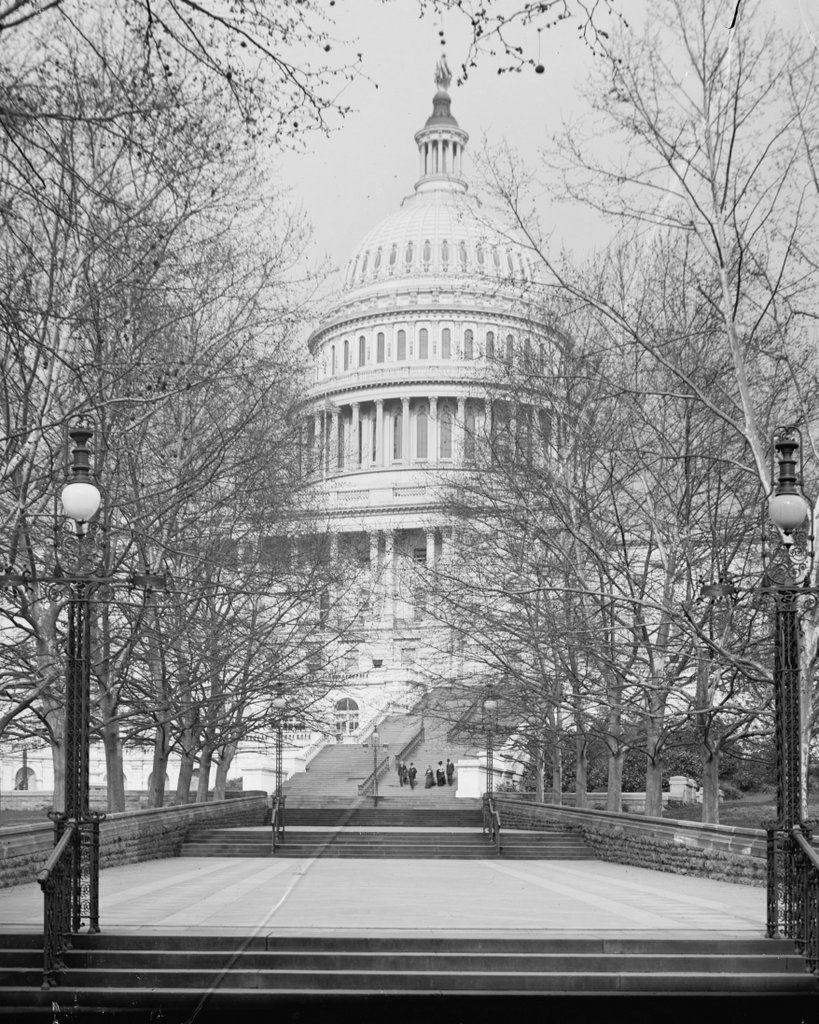George Washington’s tomb, at his Mount Vernon estate in Virginia, around 1900. Image courtesy of the Library of Congress, Detroit Publishing Company Collection.
The tomb in 2018:
George Washington died on December 14, 1799, here on his Mount Vernon estate. Four days later, his body was interred in the Washington family crypt, which was located just down the hill from his mansion, on the banks of the Potomac River. This was intended to be only a temporary tomb for Washington, as there were several different plans for his final resting place. One proposal was to bury him underneath the Capitol rotunda, and a crypt was even constructed for this purpose. However, a different plan called for Washington to be reinterred in a new, larger tomb at Mount Vernon.
It would ultimately take more than three decades for this question to be resolved, and it was only addressed after a rather bizarre act of vandalism. In 1830, a gardener, who had been recently fired from his job at Mount Vernon, decided to respond by stealing George Washington’s skull. He broke into the tomb, which was filled with the remains of at least 20 members of the family, but he ended up taking the wrong skull. Washington’s body was left undisturbed, and the perpetrator was quickly caught, but the incident highlighted the need for a new tomb that was more fitting for the father of his country
The result was this brick tomb, as shown in these two photos. It was completed in 1831, and George and Martha Washington’s remains were subsequently moved here, along with the remains of the other family members. Then, in 1837, he was placed in a marble sarcophagus, which can be seen just beyond the right side of the gate. In the process, his coffin was opened for the only time, perhaps in order to verify that his head was still in place, and observers noted that his body had been well-preserved over the intervening 38 years.
By the time the first photo was taken at the turn of the 20th century, the tomb had been joined by two obelisks at the front. The one on the right memorializes George Washington’s nephew, Bushrod Washington, who had inherited Mount Vernon upon Martha Washington’s death in 1802. He was also an associate justice of the U. S. Supreme Court, serving from 1798 until his death in 1829. The other obelisk is for John Augustine Washington II and his son, John Augustine Washington III. The elder John was a nephew of Bushrod Washington, and inherited Mount Vernon from him. The younger John later inherited the estate from his father, and he was the last member of the Washington family to own it before selling it to the Mount Vernon Ladies’ Association in 1858.
Today, almost nothing has changed in this scene in nearly 120 years since the first photo was taken. The Mount Vernon Ladies’ Association continues to own the property, which includes the mansion, its many outbuildings, the surrounding grounds, and the tomb. The estate was designated as a National Historic Landmark in 1960, exactly a hundred years after it opened to the public as a museum, and today it remains a popular tourist attraction, with around one million visitors each year.

